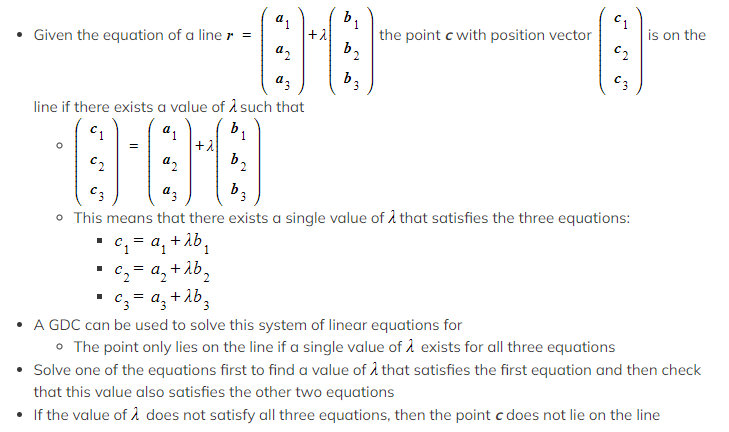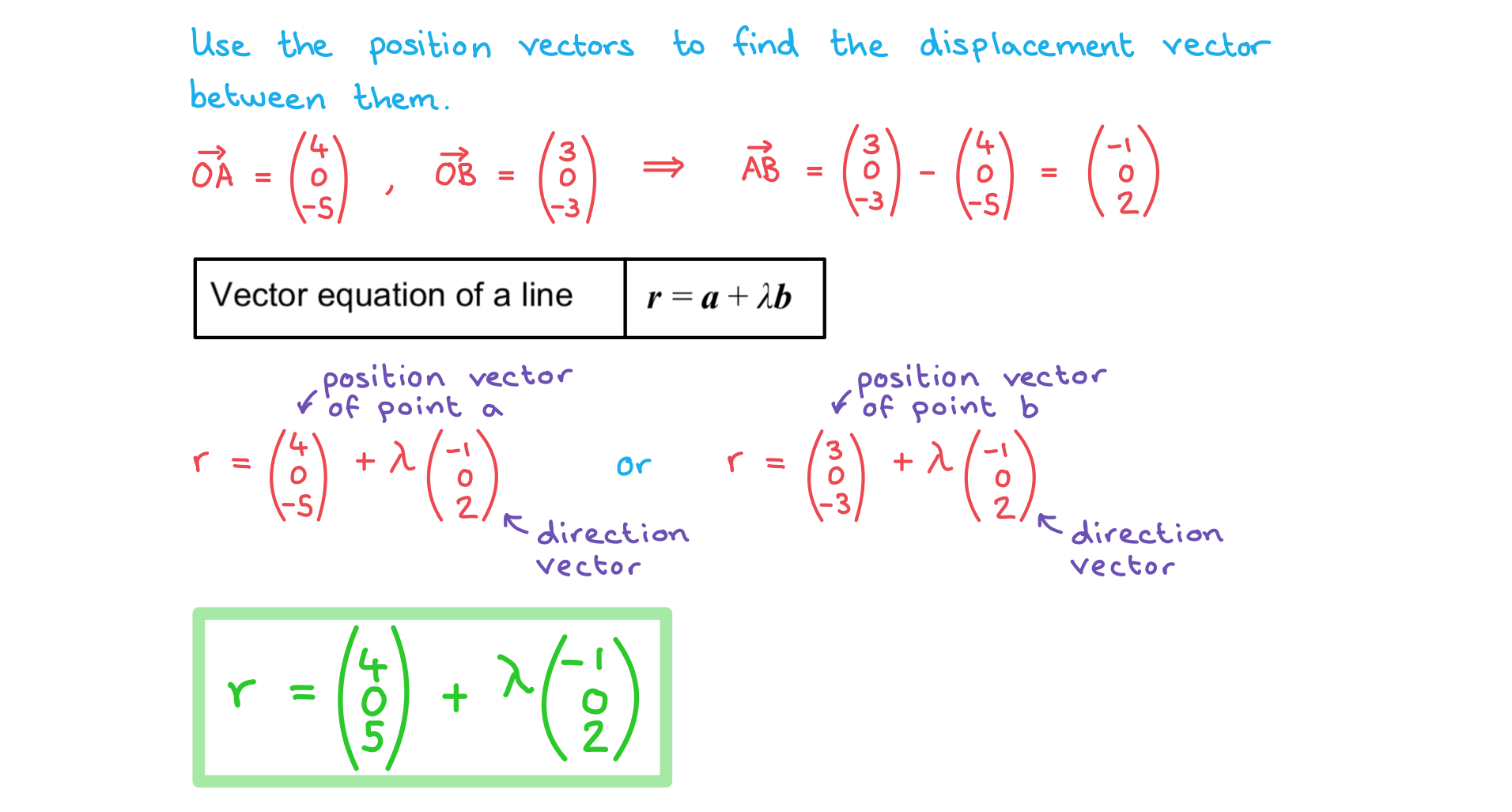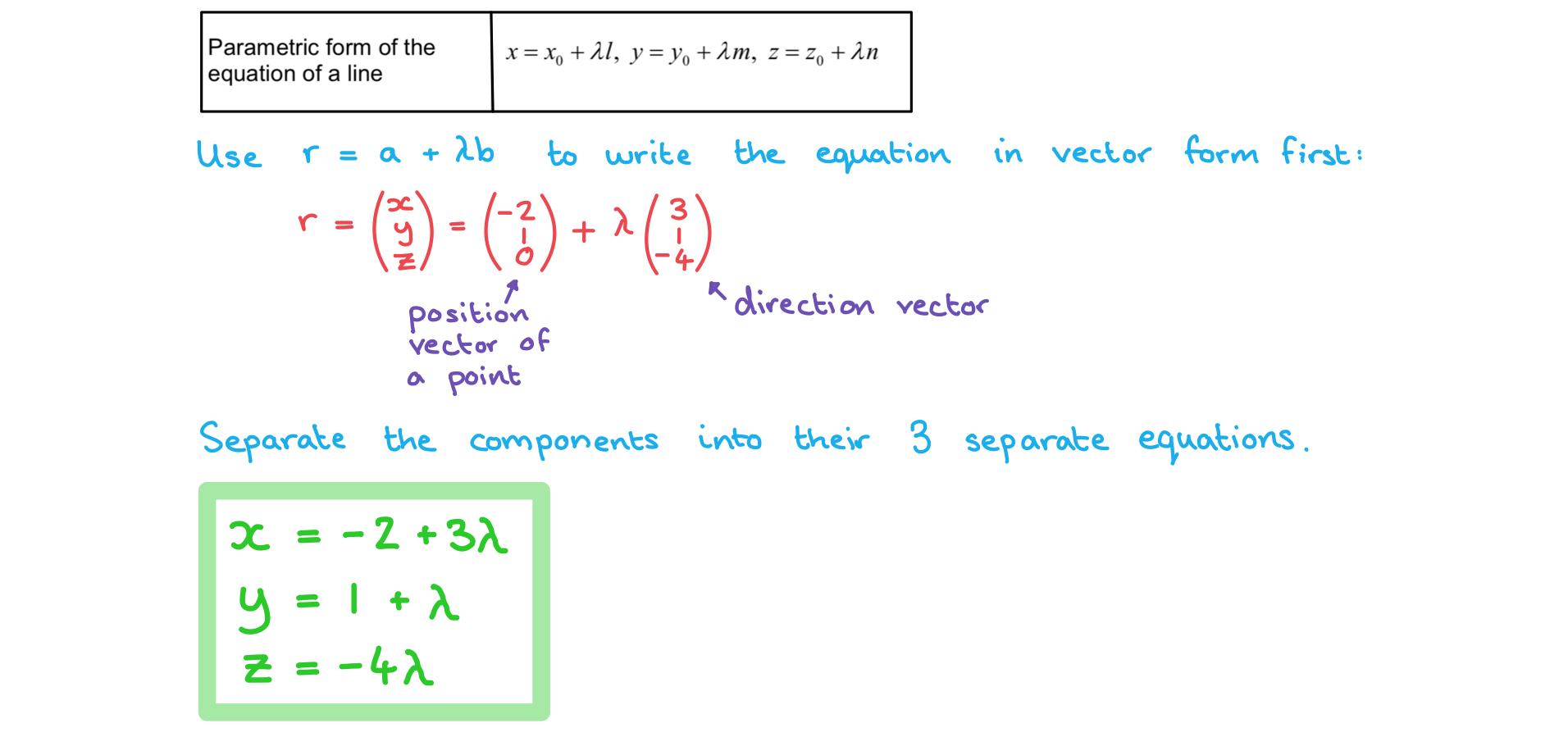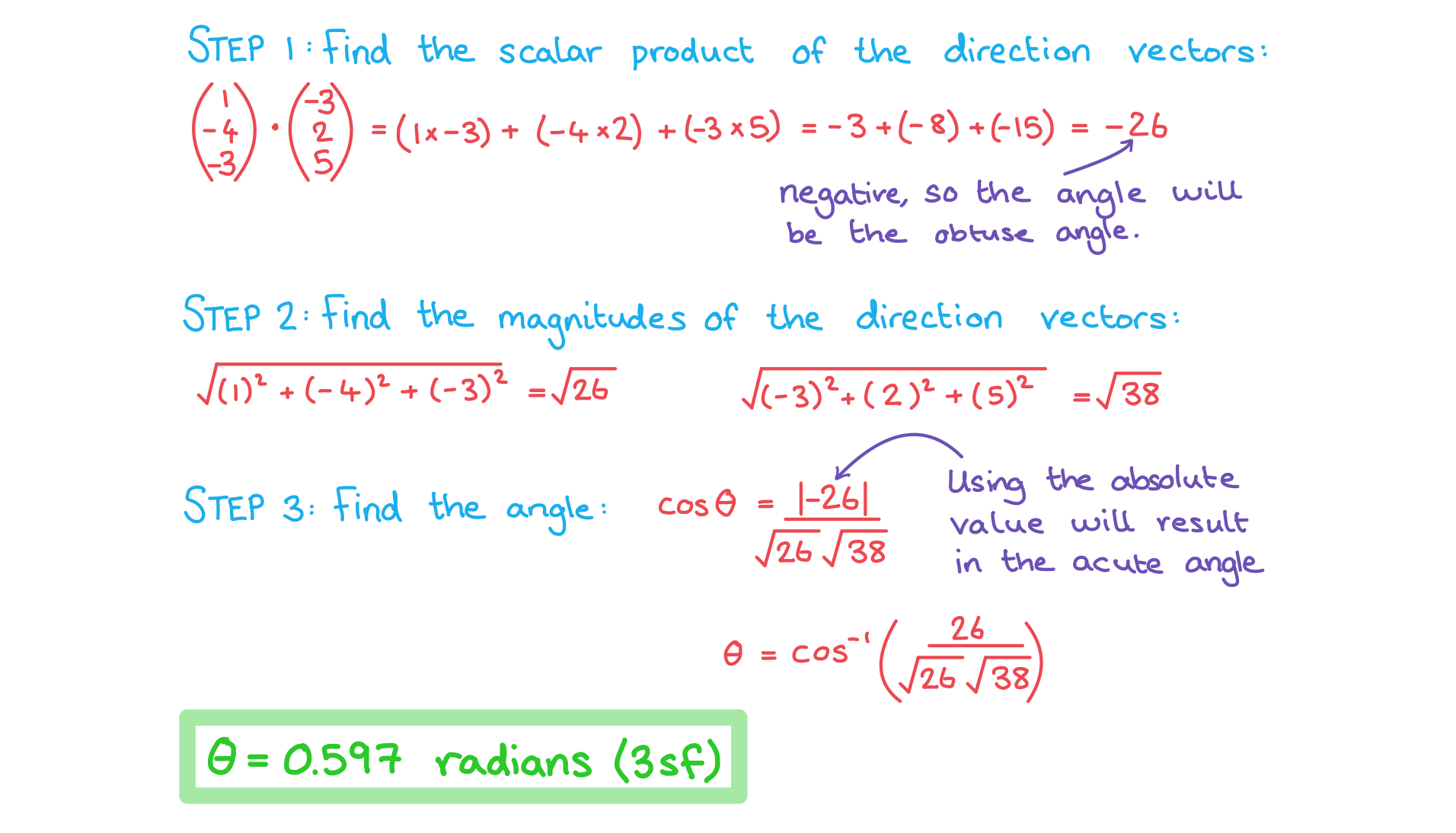- 翰林提供学术活动、国际课程、科研项目一站式留学背景提升服务!
- 400 888 0080
IB DP Maths: AI HL复习笔记3.8.1 Vector Equations of Lines
Equation of a Line in Vector Form
How do I find the vector equation of a line?
- The formula for finding the vector equation of a line is
 This is given in the formula booklet
This is given in the formula booklet- This equation can be used for vectors in both 2- and 3- dimensions

- In 2D the gradient can be found from the direction vector
- In 3D a numerical value for the direction cannot be found, it is given as a vector
- As a could be the position vector of any point on the line and b could be any scalar multiple of the direction vector there are infinite vector equations for a single line
- Given any two points on a line with position vectors a and b the displacement vector can be written as b - a
- So the formula r = a + λ(b - a) can be used to find the vector equation of the line
- This is not given in the formula booklet
How do I determine whether a point lies on a line?
 Exam Tip
Exam Tip
- Remember that the vector equation of a line can take many different forms
- This means that the answer you derive might look different from the answer in a mark scheme
- You can choose whether to write your vector equations of lines using unit vectors or as column vectors
- Use the form that you prefer, however column vectors is generally easier to work with
Worked Example
a)Find a vector equation of a straight line through the points with position vectors a = 4i – 5k and b = 3i - 3k

b)Determine whether the point C with coordinate (2, 0, -1) lies on this line.

Equation of a Line in Parametric Form
How do I find the vector equation of a line in parametric form?
- By considering the three separate components of a vector in the x, y and z directions it is possible to write the vector equation of a line as three separate equations
 These are given in the formula booklet
These are given in the formula booklet
Worked Example

Angle Between Two Lines
How do we find the angle between two lines?
- The angle between two lines is equal to the angle between their direction vectors
- It can be found using the scalar product of their direction vectors
 If you are given the equations of the lines in a different form or two points on a line you will need to find their direction vectors first
If you are given the equations of the lines in a different form or two points on a line you will need to find their direction vectors first- To find the angle ABC the vectors BA and BC would be used, both starting from the point B
- The intersection of two lines will always create two angles, an acute one and an obtuse one
- A positive scalar product will result in the acute angle and a negative scalar product will result in the obtuse angle
- Using the absolute value of the scalar product will always result in the acute angle
- A positive scalar product will result in the acute angle and a negative scalar product will result in the obtuse angle
Exam Tip
- In your exam read the question carefully to see if you need to find the acute or obtuse angle
- When revising, get into the practice of double checking at the end of a question whether your angle is acute or obtuse and whether this fits the question
Worked Example

转载自savemyexams

最新发布
© 2025. All Rights Reserved. 沪ICP备2023009024号-1









